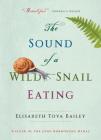|
|
 Jen Jen |
|

|
 |
Jen’s picks this month and next are taken from her book talks at our recent Night In.
A Doubter’s Almanac
Ethan Canin
If you like long, complete books, spanning years in the lives of an interesting character of two, A Doubter’s Almanac may be what you’re looking for. Here's a puzzle: Put two quarters side by side so the ridges mesh like gears, then hold one still and roll the other all the way around it. How many revolutions will George Washington make? That's a riddle from A Doubter's Almanac. The book follows Milo Andret, a troubled math genius, through three generations of his family. Milo is, let’s say, unusual. As a kid growing up in the woods of northern Michigan in the 1950s, he comes across a fallen beech tree and decides to figure out a way to whittle the wood into a chain, which is tricky because you can’t interlink the rings, you have to carve them just so—it’s sort of an ongoing tough problem to solve and this becomes a metaphor for Milo’s life. As a young man, Milo is accepted to U.C. Berkeley and living in California in the seventies is a real eye-opener for Milo in a number of ways, intellectually and otherwise. The research he begins at Berkeley makes a name for himself; also he meets a woman there and his rival. This book spans seven decades from California to Princeton to the Midwest to New York, A Doubter's Almanac tells the story of a family.
|
| |
|
 |
|
The Good Liar
Nicholas Searle
The Good Liar is psychological thriller/historical fiction. At the beginning of The Good Liar, we are introduced to Roy the conman and Betty, his next target, on their blind date. Both are in their 80s. The story takes place in England. Chapters alternate between the present and past. You do have to pay attention to the date heading of the chapters of the past, but it is not hard to follow. In the present story, Roy and Betty are making a life together—not marriage, but a companionable co-existence. Roy is plotting to take advantage of Betty financially. Betty’s grandson Steven is wary of Roy. Roy was a pre-teen and teenager during the rise of Hitler. The pacing of this book is similar to Girl on the Train. As with all psychological thrillers, there is a twist or two in the plot. One of them you may catch on to early on, but this will not ruin the book for you, I assure you. I bought this book on libro.fm and the reader is excellent—the reader is Matthew Brehner who sounds to me a lot like Michael Caine.
|
| |
|
 |
|
The Last Bookaneer
Matthew Pearl
A bookaneer by definition is a literary pirate; an individual capable of doing all that must be done in the universe of books that publishers, authors, and readers must not have a part in.
The Last Bookaneer is historical fiction for the book nerd. At one time, an interesting tension existed because there were few to no copyright protections for authors and reading was a very popular form for entertainment, so the demand for books was high. Well-regarded authors were famous, but not rewarded financially. It was the publishers that benefitted the most. In order for the publishers to get saleable material however, they needed to acquire manuscripts – this is where bookaneers came in. Eventually, thankfully, laws were enacted to protect authors. This is the story of the last, so-called heist of bookaneers. On the island of Samoa, a dying Robert Louis Stevenson works on his last novel. Davenport, a bookaneer, sets out for the South Pacific accompanied by his assistant Fergins. Soon, Davenport’s longtime rival, Belial, appears on the island, and conflict arises. |
| |
|
 |
|
Inhabited
Charlie Quimby
This is Charlie Quimby's second novel (his first was The Monument Road, a terrific read.) In Inhabited, Meg Mogrin is a successful realtor who rubs shoulders with the elite. In Meg's town there is a homeless problem that the town is struggling to fix. Isaac Samson lives in a tent and suffers a mental disorder. For example, he believes that Thomas Edison invented the Reagan presidency. When the town decides to crack down on homelessness, Isaac is displaced. I was drawn into this book by the author’s ability to explore an important issue being treated with the respect it deserves. One of the ways that booksellers decide which books to read (we try to read them all, but most of us have to sleep sometimes) is the recommendations of fellow booksellers and authors. A number of authors I admire have positive things to say about Inhabited, including one our favorite authors, Peter Geye.
|
| |
|
 |
|
Orbiting Jupiter
Gary Schmidt
Orbiting Jupiter is a middle grade or young adult novel. It is short in terms of pages, 192, but it is powerful and efficient. How quickly you read the book depends on whether you periodically stop during your reading or wait to process the whole thing at the conclusion of reading. Our protagonist/narrator is Jack, a 12-year old boy who lives on a farm with his parents. The family decides to foster a 13-year old boy named Joseph who is, to put it mildly, troubled. While he’s only 13, Joseph is a father to a girl named Jupiter—why she is named Jupiter is something I won’t spoil for you. The hardship of the juvenile delinquency system is highlighted in this book. Joseph has problems that none of us has probably ever thought about. There is both an edge to this book and a sense of compassion for juvenile delinquents. I became interested in this book after I saw the author speak. He volunteers his time working with juveniles in prison. His compassion and devotion was inspiring to me. In many ways, this is a sad book, but I think it’s so important. This is a book you could read and discuss with the young people in your life or your adult book group could glean good discussion from it. |
| |
|
|
|
|
|
|
|
 Sally Sally |
|
 |
|
|
|
|
|

|
|
Sally’s picks this month and next are taken from her book talks at our recent Night In.
The Good Negress
A.J. Verdelle
These days, I read very differently than I did before we had the store. Now, I’m primarily reading advance copies of upcoming books, with an eye for what would appeal to you and what we should have in the store. If I don’t get to a book at that point, I rarely have a chance to get back to it, because it’s on to the next new book. The Good Negress gave me a chance to catch up on a book I missed. It first came out in 1995, and has recently been re-released.
It’s appropriate to be talking about The Good Negress during Black History Month. The novel is the story of Denise Palm, a young African American girl in the 50’s and 60’s. Neese, as her family calls her, was taken to live with her grandmother in rural Virginia after the death of her father. Her mother and two older brothers continued to live in Detroit. When her mother and stepfather are about to have a baby, they send for Neese. The expectation is that she will care for both the house and the new baby.
Gradually, her responsibilities for running the household and mediating arguments and troubles with the law become greater than seem appropriate for someone her age. At the same time, a new teacher becomes her mentor, encouraging her to continue her schooling and pushing her to learn to speak standard English.
The use of language in this book is fascinating. Neese is the narrator, and uses rich and colorful dialect through much of the book. Don’t be hesitant to read the book because of this—the dialect is easy to understand. Gradually, Denise learns to use standard English, and to move between it and dialect. As this happens, Denise begins to question her role, which her family sees solely as “helping out” at home, and to desire an education. The title is ironic, referring to this role and the limits it places on her.
More than just the story of a family, the book illuminates the migration of African Americans from the rural south to the north. It’s an excellent choice for a group wishing to expand their understanding a piece of the African American experience in the United States. Racial tensions in our country may be currently eclipsed by the political situation, but they are still present, making this a timely read.
|
| |
|

|
|
The Muralist
B.A. Shapiro
This book is part mystery, part historical fiction, part art history—and it’s engrossing throughout. There are actually two stories in the novel. The contemporary story concerns Danielle Adams, a glorified go-fer working for Christie’s auction house. When Danielle discovers two foot by two foot paintings in vellum envelopes on the backs of works by famous Abstract Expressionist artists such as Mark Rothko, Jackson Pollack, and Lee Krasner, she is convinced that the paintings are the work of her great-aunt, Alizée Benoit. Alizée worked as an artist for the Works Progress Administration in New York City in 1940. Her mysterious disappearance that year was never solved, and only two of her paintings survived.
The second story in the novel is Alizée’s story. She influenced, socialized and lived and worked with up and coming artists who eventually became famous—or infamous—as Abstract Expressionists. During 1940, members of Alizée’s family, who were Jewish, were trying desperately to get to the United States from Europe. Alizée worked feverishly and unsuccessfully to secure paperwork for them to do so.
The book shifts back and forth between 1940 and 2015 and Danielle and Alizée. Alizée’s story features well known historical figures such as Eleanor Roosevelt and the artists I mentioned earlier. It also shows how much life in our country has changed. Can you imagine going to the White House, asking for the First Lady’s secretary and ending up speaking to the First Lady herself?
I was so eager to find out how the book ends, that I raced through the final chapters!
This book offers many directions for book group discussion. They include: art and art history, the role of the New Deal in bringing the country out of the Great Depression, integrity of government officials, and the pull of family on individuals across time. It is well written, well-researched, and tells a heck of a story!
Shapiro is also the author of The Art Forger, which you may have read a few years ago. |
| |
|
 |
|
The Tumbling Turner Sisters
Juliette Fay
Have you ever wondered where authors get the ideas for their novels? Juliette Fay's great grandfather was in vaudeville, and was the inspiration for The Tumbling Turner Sisters. She used his name and some of the details of his life in the book. You can even see pictures of him and his dancing shoes at the back of the book!
Vaudeville was the king of live entertainment in the United States for 50 years, beginning in the early 1880s. Every small town had a vaudeville theater, and large towns had several. Performances were made up of separate, unrelated acts, which might include singers, dancers, trained animals, acrobats, jugglers, and comedians.
The Tumbling Turner Sisters begins in 1919. The sisters' father spent an evening in a tavern—getting those drinks in before the start of Prohibition—got in a fight, and came home with an injured hand which prevented him working. In that time, there were no safety nets for families in such situations, and eviction was looming. Ethel Turner decided that her four daughters would develop an act as tumblers and go on the vaudeville circuit, and that she would go along. It didn't matter that the girls had no desire to perform or that her husband would be left at home to fend for himself.
And off they went! The Tumbling Turner Sisters act was pretty bad at the start, but gradually improved, until the sisters were on the coveted west coast circuit, and headlining the show. Along the way, they tasted more freedom that they'd ever experienced, and met a cross section of other performers. Some befriended them, some feuded with them, and some fell in love with them. Cary Grant makes a cameo appearance, and great quotes from vaudevillians are at the beginning of each chapter. Here's one from Will Rogers: “There are three kind of men. The one that learns by reading. The few who learn by observation. The rest of them have to pee on the electric fence for themselves.”
The book is an easy read which takes us into an era of our history which may be as new—and entertaining—to you as it was to me. A reading group guide for the book is available.
|
| |
|
 |
|
The Yid
Paul Goldberg
The Yid is set in Russia the week before Stalin’s death in March 1953. On February 24, a Black Maria, or police van designed for the transport of prisoners, pulled up before the communal apartment building of Solomon Levinson. Levinson had been an actor in the well-regarded but now defunct State Jewish Theater. He was also a veteran of past wars. Levinson’s response to those who came to arrest him was the catalyst for a series of events which was humorous in a very dark way and also dead serious.
The plot proceeds in a way that reminds me of the children’s story of Chicken Little. Remember Chicken Little? Convinced that the world was coming to an end, she went on a journey to see the king, and kept adding characters on her way. Levinson sets out to see Stalin, and adds some unlikely companions along the way. They include Aleksandr Kogan, a machine gunner who served under Levinson and went on to become a leading surgeon. Another is Friederich Lewis, an African American who left the racism of the United States—he thought—to become an engineer in Russia. Kima, a mysterious young woman, joins the group, as well as two of Levinson’s neighbors.
A signature presentation of the State Jewish Theater was King Lear, and references abound to that play, with Stalin cast as the mad king. In additional to Stalin, other historical figures such as Paul Robeson and Marc Chagall, have roles to play in the book.
I’m also reminded of the book The 100-Year-Old Man who Climbed out the Window and Disappeared. If you read that book, you may remember that the main character went on a strange journey, moving in and out of actual historical events.
This book is what can be called historical fantasy. It’s unconventional, provocative, and accessible. Through the generosity of the publisher, we have a hard copy of the book to give to your leader if you select this book for your group to read.
|
| |
|
 |
|
The Sound of a Wild Snail Eating
Elisabeth Tova Bailey
The Sound of a Wild Snail Eating was the most beautifully written of the books I read Night-In. It’s a book of essays, and there’s a bit of mystery about it. The author’s name is a pseudonym for a woman who has a vague but debilitating illness. As far as I could tell, she has had this illness for over twenty years.
She became ill on a trip to Europe, and somehow managed to get back to the United States. As the book begins, she’s been moved from her home to some place, not well defined, where she can be more easily cared for. She is confined to bed, with limited contact with the world outside her room.
One day a visiting friend, seemingly on a whim, digs up a violet plant, puts it in a pot, and puts a snail which she sees on the ground in the pot as well. She places the pot on Elisabeth’s bedside table. This was the beginning of a lifegiving relationship for the author. I don’t have the words to express how exquisitely this relationship is portrayed. First Elisabeth watches the snail. Several mornings she wakes to find small square holes eaten through paper on the bedside table, and begins to leave flower petals for the snail to eat. The first night she does so, she hears the snail eating. This was a powerful image for me. Imagine listening to a snail eating! Elisabeth gradually learns best practices for caring for a snail. She begins to do research on snails. Some of her research is scientific, but she also discovers an amazing number of haiku written about snails.
The book portrays a woman who copes with an awful illness in part by exploring the life of another creature. The writing is meditative, a bit mystical, and incredibly soothing.
The book came out in hardcover in 2010, and has just recently become available in paperback. It made me want to share my home with a snail—I wonder if you’ll feel the same way?
|
| |
|
|
|
|
|
| |
|
|
|
|

Ann
|
|
 |
|
A Spool of Blue Thread
Anne Tyler
A Spool of Blue Thread is the story of the Whitshank family and their
Baltimore home. The story centers on Red and Abby Whitshank, along
with their children and grandchildren. At one point, there is a
flashback to Red's parents and how they came to live in the house in
Baltimore. The characters are interesting and believable. It didn't
take long for me to become involved in their story. The Whitshanks
share a history, traditions, and a sense of family pride that unites
them despite their differences and the friction that sometimes arises
in family life. A Spool of Blue Thread presents a variety of issues
that could spark an interesting discussion between friends or book
club members.
|
| |
|
|
|
|
|
|
|
| |
|
|
|
|
|
|

Bob
|
|
 |
|
So Anyway...
John Cleese
Jen and Sally wanted me to try out something new. I guess you used to call it “books on tape” except it’s on my phone and there’s no place to plug in a CD (which technically isn’t a tape anyway.) So it’s “books in my pocket reading to me.”
My fear was that this was going to be complicated and I would have to rent a 12-year-old to get me set up on my phone. But actually, it was pretty easy with Libro.fm. The set-up was straight forward and the books to choose from were diverse. I downloaded three, one of which I listened to and review below. The operation of reading the book is like listening to a tape (duh) so it’s pretty straight forward. I like the part that I can back up in 15 second chunks with the touch of a button to recall what you had listened to when you had put the book down ( you can also skip forward similar chunks for boring parts.) I was a little nervous about having a book read to me. I used to drive about 80 minutes a day and that made sense, multi-tasking and all. But in retirement I’m lucky to drive 10 minutes in a trip. The police are going to get suspicious if I drive aimlessly around the city for an hour, listening to a book. And as it turns out John Cleese’s book is an autobiography. I can easily handle an hour of his humor but an hour of his Prep School at St. Peter’s?? Plus, he’s does the reading! It all turned out well. I found that I can mute sporting events (mostly a plus), stretch out on the couch and listen to the book in my pocket.
Well, that just shows you the influence of the book for this little experiment, So Anyway.... by John Cleese. You already know I’m hooked on comedians and British product Cleese, of Monty Python fame is one of my favorites. He literally takes you from day one in his life to the present. The man has either done incredible research or has a photographic memory. He calls up the name of just about everybody that’s been in his life. I found it interesting to learn how this truly great funny man came to be where he is today. I have to warn you though, there are lots of British references. If you don’t know what a “pitch” is in terms of real estate or that Cricket is a sport, you might struggle a bit. |
| |
|
|
|
|
|
|
|

Gail |
|
 |
|
|
|
|
| |

|
|
Our Souls at Night
Kent Haruf
Addie Moore visits her neighbor Louis with an unusual proposal. They have both lost their spouses and their children are not close by. Both are lonely. The beautiful story that unfolds reminds us that love does not dissolve with age. Haruf is very popular with Minnesota readers and I was not disappointed with this, the last book before his death. He also wrote Eventide, Benediction and Plain Song. You may recognize some of those titles. The Philadelphia Inquirer says: "Haruf gives us a powerful, pared-down story of 2 characters who refuse to go gentle into that good night."
|
| |
|

|
|
The Curious Incident of the Dog in the Night-Time
Mark Haddon
Chris, an autistic15 year-old boy who is mathematically gifted, goes to a special needs school. His counselor encourages him to write down his experiences. Despite his fear of interacting with people, Chris investigates the murder of a dog in his neighborhood and writes it all down in his notebook. He also uncovers secret information about his mother! This has been on my list to read for a long time and I’m glad I took the time to read this enjoyable story. The book was also adapted as a play and won 5 Tony awards for Best Play. |
| |
|

|
|
Emily and Einstein
Linda Francis Lee
The author combines fantasy and reality to make a compelling story. A dog named Einstein shows Emily how to cope with the loss of her husband, Sandy. Emily uncovers truths about Sandy and her own life with the help of Einstein. Emily gets a 2nd chance at love and fulfillment. I enjoyed this book and it reminded me somewhat of The Art of Racing in the Rain. The author has written 19 books, some of which have been optioned for movies. This is an author worth exploring. |
| |
|
|
|
|
|
|
|

Hannah |
|
 |
|
|
|
|
| |

|
|
Tough Girl
Carolyn Wood
This is a memoir of three journeys: 1) from Wood's childhood terror of water to her Olympic championship, 2) her hike across Spain, like Wild for those of us over 60, and 3) the long process of mending her heart, broken when her wife left her. There are many photos from her swimming years: the book gives the reader a sense of what Olympic athletes and their families must invest. It also shares a plan for enduring and transforming grief. |
| |
|

|
|
H Is for Hawk
Helen MacDonald
H Is for Hawk is another memoir that talks about being with nature in relationship to healing a broken heart. MacDonald is grieving for her father, and decides to train a goshawk, a fascinating process that she brings to life beautifully. She shares T. H. White's writings about his less successful goshawk training, and contemplates why each of them undertook training a goshawk and what the experience means in their lives.
|
| |
|

|
|
The Once and Future King
by T. H. White
I'm so glad that H Is for Hawk got me to read this! The first of the four books in The Once and Future King, The Sword in the Stone, was copyrighted in 1939. Disney made a movie inspired by White's account of Merlyn turning the boy Arthur ("Wart") into different animals (the ants are Nazis) to teach him to think. And Rowling says she "stole" Harry and Dumbledore from this book! The middle two books are a bit of a project, but the fourth, The Candle in the Wind (which was written in 1958 and inspired the musical Camelot), is powerful and has much to offer for those trying to make sense of our current political and cultural chaos. The Once and Future King mixes comedy and tragedy. It achieves gravitas while horsing around with mythology. |
| |
|
|
|
|
|
| |
|
|
|
|

Tim |
|
 |
|
H is for Hawk
Helen Macdonald
I listened to an interview with Helen Macdonald on Minnesota Public Radio several months ago. I promised myself at the time that I'd read this book, just because of the interest the interview provoked. It was even better than I'd hoped. Her interweaving several themes: the gentle (not) art of hawking, personal introspection, grief at the loss of a parent, life changes and career choices.... all heady stuff. You will not be disappointed. |
| |
|
|
|
|
|
— page top —
|
|



 Jen
Jen
 Sally
Sally





